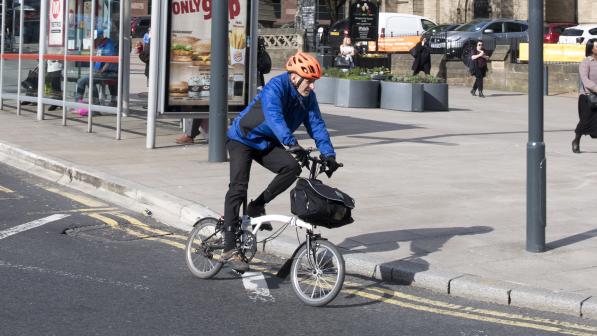What is an e-cycle?

What is an electric cycle?
The simple answer is that an electric cycle (e-cycle for short) is more or less a regular cycle with the addition of a motor to assist your progress.
The more complicated answer is that it is a hybrid form of transport meaning part of the power comes from the rider (exactly how much is up to you) and part of it from the motor. This applies up to around 15.5mph which is the current legal limit for electric assistance. Once you are pedaling beyond that speed the motor will not assist you.
You might also hear e-cycles called a pedelec. This is simply another name for an e-cycle where the power is activated by pedaling instead of by throttle that you'd find on a much more powerful moped. The vast majority of today’s e-cycles are pedelecs – so clearly they are not really similar to mopeds or motorbikes as you must pedal to activate the motor.
You can ride an e-cycle anywhere you’d ride a normal bike: on the road, on a cycle path or shared-use path, or on a bridleway or byway. You don’t need to be taxed or insured, wear any specific safety equipment, or have any formal training.
Why would you choose an e-cycle?
Did you know e-cycles are capable of doing just about everything a regular bike can do and more? As well as the obvious benefits of a motor – helping you get up the hills more easily and with less sweat – there are several other benefits that might not at first occur to you.
The pros of riding an e-cycle:
- If you have a recurrent injury or illness an e-cycle may help you keep cycling through it, rather than having to give up pedalling completely.
- An e-cycle can fill the gap between journeys short enough for walking or non-powered cycling and longer trips where a train or car may be necessary.
- You could get to and from work faster on an electric bike and convert commuting into leisure time.
- They can be a viable replacement for a second car with all the environmental, financial and other benefits.
- Electric cycle riders often say they feel safer in traffic than when riding a non-powered bike, as the extra acceleration and speed up hills mean the speed of other passing vehicles is less than it otherwise would be. The quick acceleration off the mark also means you can clear stationary traffic more quickly.
- You can carry heavier loads more easily than with a regular bike, so many shopping trips and the school run might now be a possibility with an e-cycle.
- You still get exercise – it’s not cheating! Many studies have shown that e-cyclists get plenty of very beneficial aerobic exercise. The vast majority of electric bikes have power level settings on the handlebar controls that let you dial down the power if you want more exercise, or turn it up if in need of more assistance.
- They are great fun to ride!
The cons of riding an e-cycle:
- The cycle is heavier to lift (but not to ride)
- They are more expensive

Types of electric cycle
City/trekking e-cycle
City/trekking e-cycles offer step-through frames because they’re so much easier to mount and dismount around town. Hub gears and belt drives are very low maintenance. These are suitable for cycling on smooth surfaces and carrying shopping.
E-road bikes
Many e-road bikes (though not all) use lighter, lower-power motor systems with smaller batteries. The integration of a motor system into an e-road bike can be so inconspicuous that it takes a keen eye to notice. The lightest builds can be 11kg or less, with the motor system accounting for about 3.5kg of that. These e-cycles help you maintain speed and distance.
Electric mountain bikes
Electric mountain bikes generally use mid motors because weight in either wheel unbalances the bike and increases the likelihood of punctures and bent rims. Full suspension on an ‘acoustic’ mountain bike can mean climbing performance is compromised, but that’s not really an issue with a 250W motor on hand, so the longer the suspension travel the better!
Trike and recumbent
Any type of recumbent or trike can have electric assistance added, but trikes work especially well, as the extra weight isn’t really an issue and can actually help with stability. Some e-trikes have batteries up to 4,000Wh and a range of over 600km!
E-cargo bike
Electric cargo bikes and trikes have the potential to revolutionise how much you can carry for deliveries, your business or transporting up to four children.
Adaptive e-cycles and side by side
Side by side tandem e-cycles enable two riders to sit next to each other and communicate clearly throughout a ride. Electric assist makes this normally heavy adaptive cycle easier to manoeuvre - you can even cycle backwards which helps with parking. You also need less strength to pedal so people with a variety of abilities can use it.
Folding electric bike
A folding electric bike can be folded down quickly, making them easy to carry for commuting.


















